3-1. Overview of Incoterms
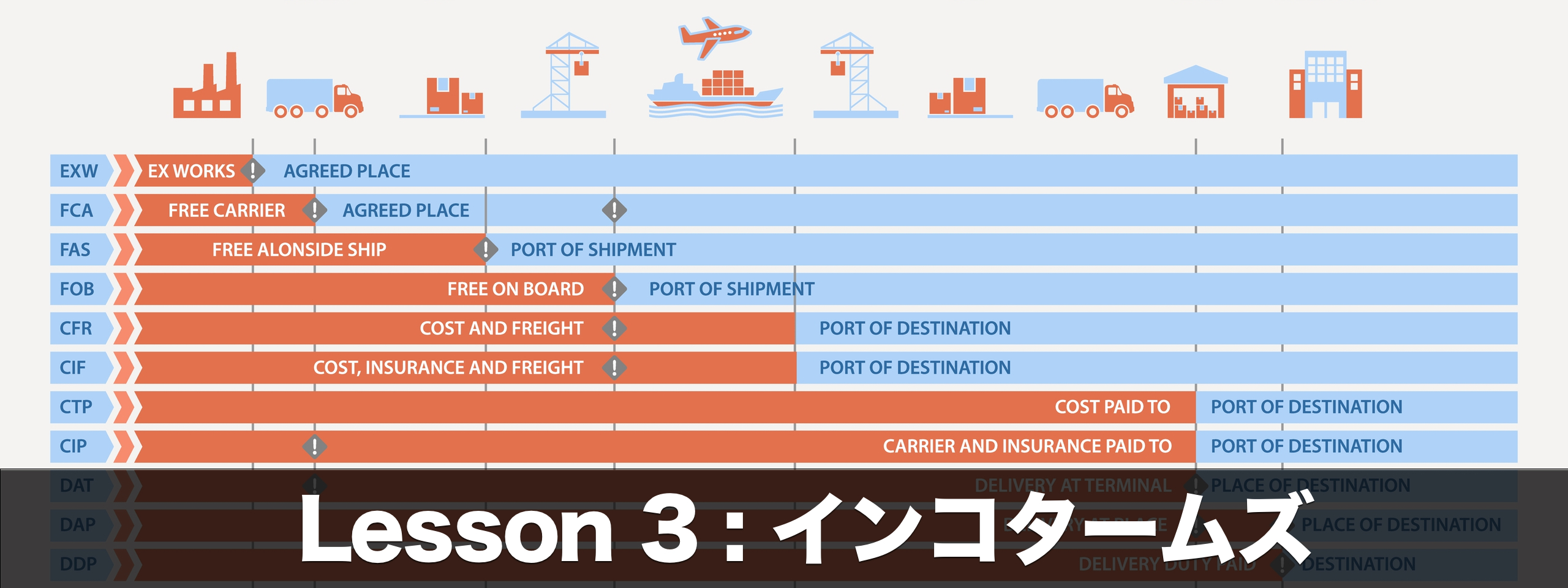
Overview



You need to understand them one by one.


I can give you some tips to help you understand.
Learning Points
- Outline of Incoterms
- Main Purpose of Incoterms
- General Framework
- Four Essential Groups to Remember
Outline of Incoterms

Incoterms are the globally recognized trade rules established by the International Chamber of Commerce (ICC). Currently, Incoterms 2020 is in effect, with revisions occurring approximately every decade.

Main Purpose of Incoterms

Incoterms are agreements between exporters (sellers) and importers (buyers) that define who is responsible for the “Costs” and “Risks” of transporting goods.
International trade differs from domestic transactions regarding language, laws, and business customs. Therefore, common international rules are needed to avoid trouble.



・Costs (such as the ocean or airfreight charges, port fees, insurance, trucking, customs duties, taxes, etc.)
・Risks (such as damage or loss of goods)

Considerations
The Incoterms do not have legal force, as they are global rules rather than legal regulations.
Whether to apply them is at the discretion of both the seller and the buyer. Therefore, while Incoterms 2020 is currently in effect, it is also possible to use older versions such as Incoterms 2000.



Even in practical work, I have never encountered all of them.
Delivery Point

In Incoterms, who bears which costs and assumes which risks are clearly defined. What becomes crucial here is the delivery point, where the responsibility for costs and risks shifts.


There are multiple delivery points like the following:

・Factory or warehouse on the export site
・Ports, etc., on the export site
・Ports, etc., on the import site
・Factory or warehouse on the import site

Four Essential Groups to Remember
There are 11 Incoterms in total, and they are divided into four groups:
- Group E: Exporter’s factory/warehouse
- Group F: Exporter’s port, etc.
- Group C: Importer’s port, etc.
- Group D: Importer’s factory/warehouse

Let’s learn this outline.
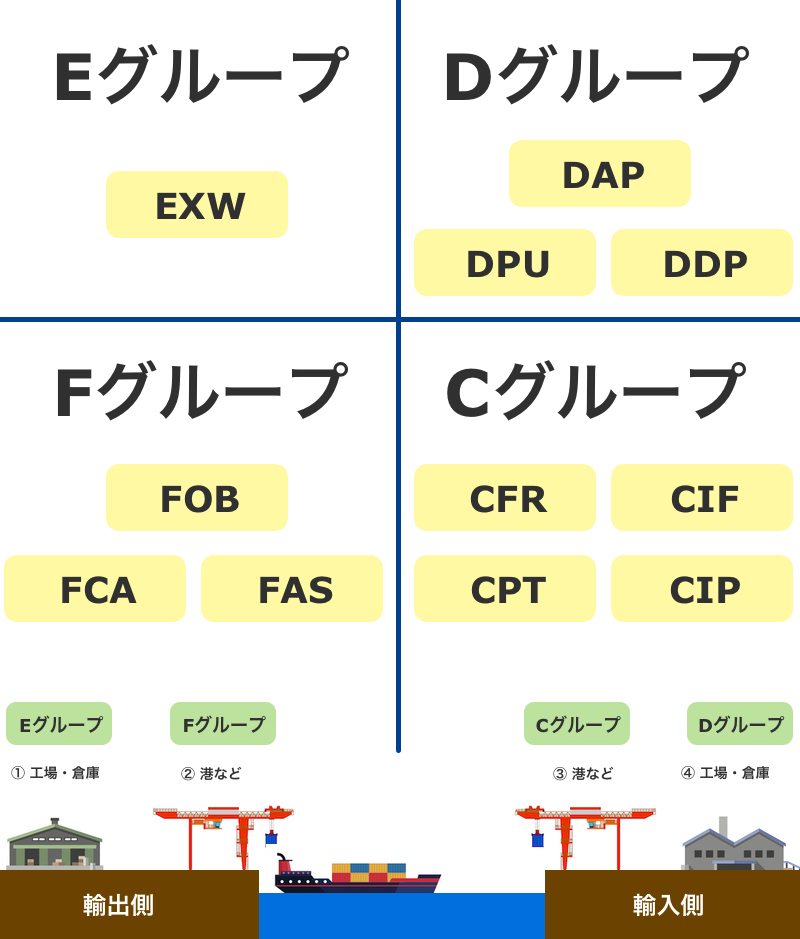


Group E: Delivery Point – Exporter’s factory/warehouse
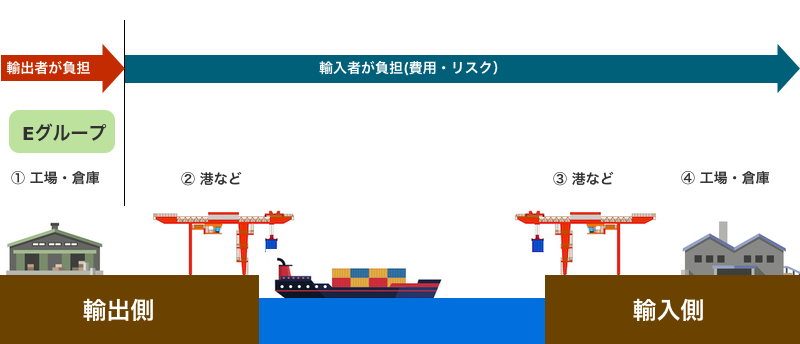
Group E’s delivery point is the exporter’s factory or warehouse.
The exporter will be responsible for handing over the goods at the factory, and all subsequent transportation costs and risks, such as cargo damage, become the importer’s responsibility.

E Group’s cost and risk burden
- Exporter: No burden after delivering the goods at their factory or warehouse
- Importer: Burden all costs and risks after receiving the goods at the export site
Group F: Delivery Point – Exporter’s port, etc.
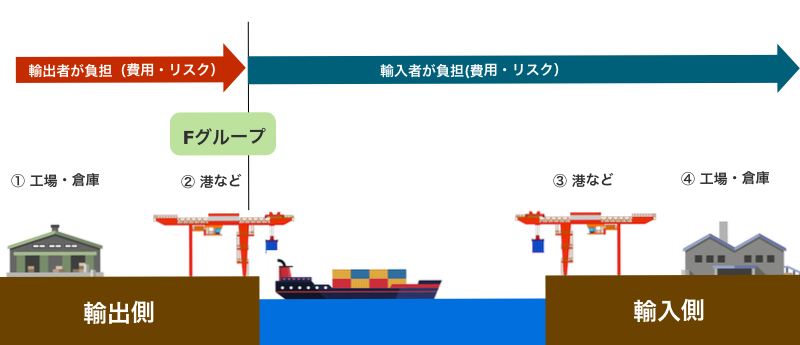
In Group F, the responsibility for the costs and risks of the cargo shifts at the specified location, typically the exporter’s port.
F Group’s cost and risk burden
- Exporter: Bears the cost and risk up to the exporter’s port
- Importer: Bears the costs and risks after receiving the cargo from the export port

Group C: Delivery Point – Importer’s port, etc.

In Group C, the delivery point is when the cargo arrives at the port of import or the agreed destination in the importing country.

C Group’s cost and risk burden
- Exporter: Bears the costs and risks up to the port of import
- Importer: Bears the costs and risks of receiving from the port of import


Such as CY or CFS!
Group D: Delivery Point – Importer’s factory/warehouse
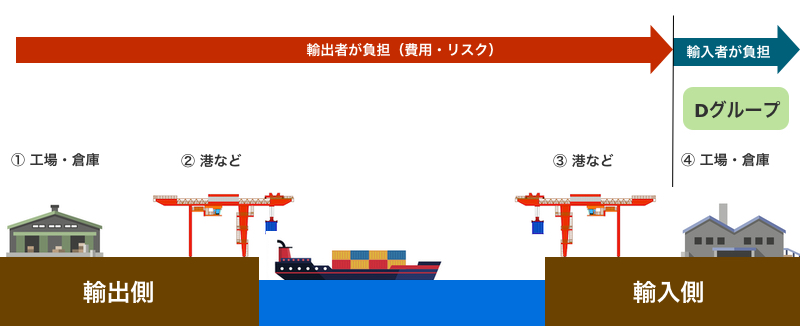
D Group’s delivery point is the Importer’s factory or warehouse.
The responsibility for the costs and risks of the cargo shifts at the moment the goods arrive at the location specified by the importer.
In this term, the exporter bears all transportation costs and risks, such as damage or loss of goods, until delivery completion.
D Group’s cost and risk burden
- Exporter: All costs and risks to the destination (*)
- Importer: No burden until the cargo is received
(*) In some terms, such as DAP, the importer has to bear customs duty and consumption tax.



Summary
This curriculum explained the overview of Incoterms.
Although the delivery points vary for each term, they can be broadly categorized into four groups.

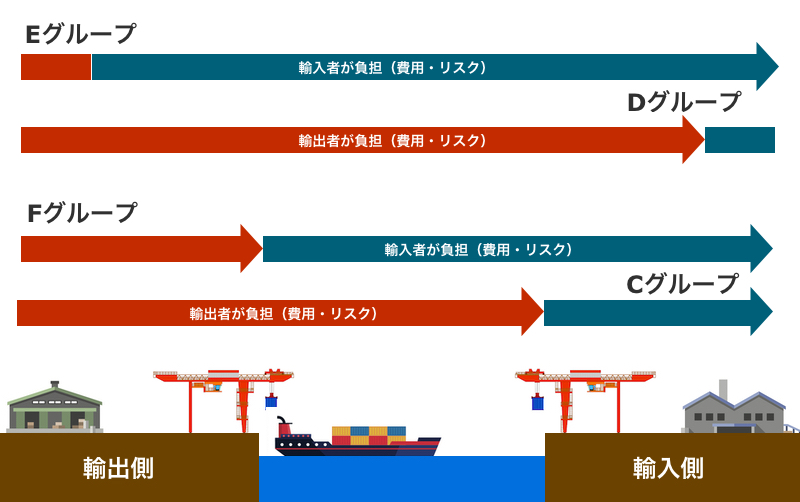
It is important to understand the overall Incoterms framework to memorize the conditions of each one. Let’s check the details of the Incoterms for each group in the following curriculum.
Enhanced Learning with Videos
Test Yourself
Reinforce your understanding of this topic by working through the exercises. Attempting the exercises without referring to the material as much as possible is advisable.




